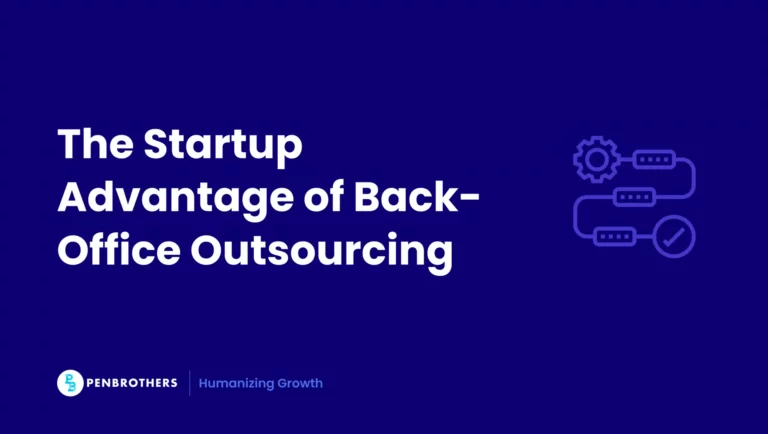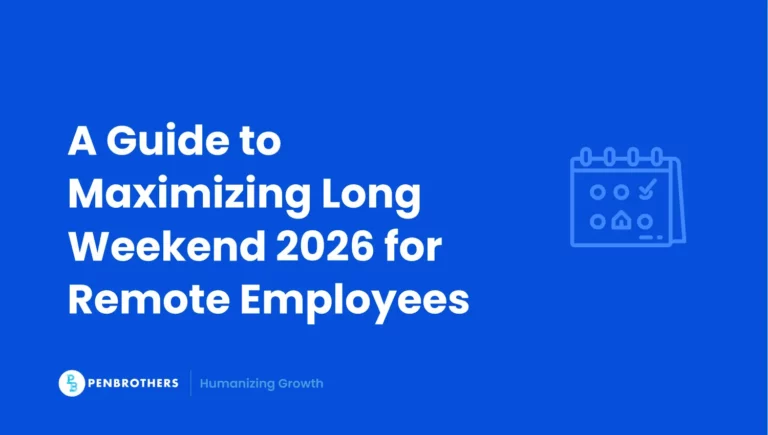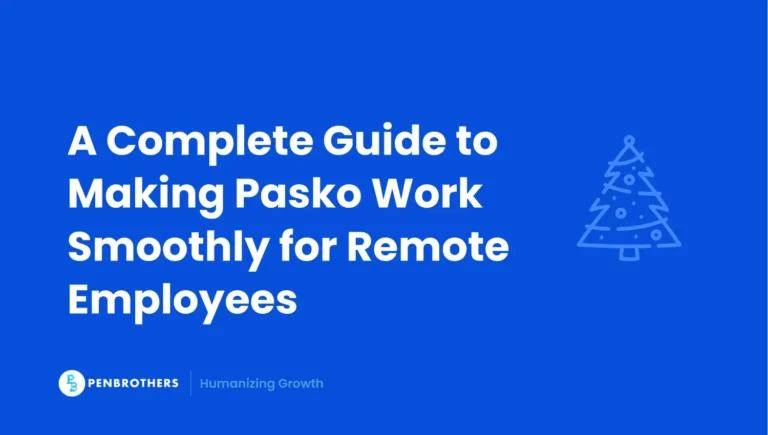Imagine a company urgently hiring software engineers. The national employment report comes out: unemployment is low, labor markets look “healthy,” job growth is strong. But the company still can’t find enough qualified candidates. Salary demands are sky-high, relevant experience is rare, and many applicants simply don’t meet the technical requirements.
This tension between what macro data signals and what businesses feel on the ground is real and growing. National employment reports are essential tools. But they often omit the barriers, mismatches, and frictions that affect actual talent availability. In this article, we’ll explore how “national employment” is measured, why it doesn’t always tell the full story, where disconnects happen, and how businesses can better align strategy with reality.
What “National Employment” Really Measures
National employment reports such as those from the U.S. Bureau of Labor Statistics (BLS), similar agencies in other countries (e.g. Philippines’ Philippine Statistics Authority) or international bodies, typically include metrics like:
- Unemployment rate (various versions: U-3, U-6 in the U.S.)
- Labor force participation rate (how many working-age people are working or actively seeking work)
- Job / payroll growth by sector (how many jobs were added or lost in industries such as manufacturing, health care, services)
- Wages / earnings growth in aggregate or by sector
- Sometimes hours worked, underemployment, or temporary vs permanent status
These measures are powerful teaching tools. They allow policymakers, analysts, and business leaders to track trends over time, compare industries or regions, and detect macro-shifts (recessions, expansions, etc.). However, they do not necessarily capture:
- Skills needed vs skills available
- Local or regional supply constraints
- Barriers like credential mismatch, licensing, credential recognition
- Hidden forms of unemployment: people who have stopped looking, discouraged workers, part-timers who want full-time work
- The nuance of job quality (permanent vs contract, pay vs benefits, remote vs in-office etc.)
Also, some of the data is lagged, revised, or aggregated in a way that masks local variation. For example, the BLS uses different surveys (household vs payroll surveys) with different definitions, which sometimes diverge.
The Role of Advocacy and Policy Groups
Advocacy, policy, and labor-rights groups often view employment data through more qualitative and contextual lenses. They focus on aspects national reports tend to leave out:
- Job quality: Are jobs full-time, stable, well-paid, with benefits?
- Living wages and wage growth relative to cost of living
- Worker protections, rights, safety, contract stability
- Equity issues: access across gender, race/ethnicity, region, socio-economic status
Groups like the National Employment Law Project (NELP) (in the U.S.) analyze how high unemployment might hide underemployment, unstable work, or wage stagnation. While raw numbers might show low unemployment, the lived reality of many is “working but barely scraping by,” or “in jobs that do not match their training.” These gaps matter because they influence retention, productivity, and whether people can meaningfully participate in the economy.
Employment Networks and Ground-Level Insights
On the frontlines, job centers, vocational agencies, local employment networks, businesses and candidates encounter constraints that aren’t visible in national statistics:
- Skills mismatch: Employers often need specific technical skills, certifications, or years of experience that are not captured by general education levels.
- Geographical constraints: Even when national job numbers look good, in many regions there are fewer qualified applicants. Rural or less-developed areas may lag.
- Access barriers: Training, education, infrastructure (internet, transport), licensing/credential recognition can block potential talent.
- Awareness and information asymmetry: Employers may not know of some talent pools; workers may lack information about jobs or needed skills.
- Hidden unemployment or discouraged workers: People who stop searching are not counted; these affect actual availability.
These organizations often provide invaluable qualitative data: feedback from employers, surveys of people seeking work, insights into what “real” requirements are (e.g. portfolio, soft skills, hands-on experience vs just formal qualifications), how long it takes to fill roles, etc.
The Gap Between Reports and Real Talent Availability
Even in times of apparently strong national employment, many companies report hiring difficulties. Here are some of the main factors:
- Skills mismatches and credentials misalignment
- For example, the report The Great Misalignment from Georgetown University (Center on Education and the Workforce) found that in many U.S. local labor markets, the field in which credentials are granted does not match projected job openings: in many markets, 50% or more of middle-skills credentials would need to be in different fields to meet demand.
- The National Skills Coalition says that a majority of jobs (52 %) require training beyond high school, but nota four-year degree. Yet only about 43 % of workers have that intermediate level of training.
- Regional disparities
- Even if national unemployment is low, some states or metro areas may have severe shortages or surpluses.
- Infrastructure, cost of living, migration / mobility issues prevent talent from relocating.
- Hidden or under-utilized labor pools
- Discouraged workers, or people who are qualified but not actively job-searching.
- Veterans, people re-entering the workforce, caregivers etc., who may have skills but lacking recent experience or formal credentials.
- Revisions and data lags
- National reports sometimes get revised downward. For example, between April 2024 and March 2025, the U.S. economy was reported to have generated 911,000 fewer jobs than initially estimated.
- Some surveys are monthly but can suffer sample bias, nonresponse issues, or delays.
- Job quality and employer standards
- Employers may require specialized technologies, soft skills, or experiences that are rare.
- Sometimes pay expectations are misaligned with what the market can bear.
- Many roles are advertised as requiring “X years experience” even when that proves to be an arbitrary filter.
- Structural / economic shifts
- Technology, automation, AI shifting what is needed. Skills that were once sufficient are now obsolete.
- Growth sectors demand new kinds of talent: e.g. data science, cybersecurity, sustainability roles. National employment reports may not pick up quickly or in detail the shift in which skills or which roles have high demand.
Why This Disconnect Matters for Businesses
When business leaders rely solely on national employment headlines, there are concrete risks:
- Hiring delays and increased cost
Searching for scarce talent can take longer; companies may raise salaries or perks more than they budgeted.
- Compromised quality or retention
Hiring someone who meets the minimum but not the optimal skill set, or offering salaries that later feel low, leads to turnover.
- Misplaced expansion or investment decisions
If a sector looks strong nationally, a business might expand in regions or roles where local talent isn’t available.
- Competitive disadvantage
Companies that better understand local or skills-based shortages (or leverage offshore/remote talent) have an advantage.
For businesses working in global talent markets (remote teams, offshoring, hiring across borders), these issues are even more acute. Even if national employment reports in Country A look strong, that doesn’t guarantee that the needed talent (especially specialized or niche skills) is accessible, affordable, or reliable.
Bridging the Data vs. Reality Divide
Business leaders can take practical steps to avoid strategic missteps:
- Cross-reference macro data with local / industry-specific insight
- Use regional labor market reports, chambers of commerce, industry associations.
- Talk to local institutions (vocational schools, universities, technical institutes) to understand what training is being done and whether it aligns with what you need.
- Use alternative data sources
- Job postings data (which roles are being advertised, what skills are in demand)
- Surveys of employers or hiring managers in your sector or region
- Real-time platforms or “talent intelligence” tools
- Engage employment networks and advocacy groups
- They often observe “on the ground” obstacles (transport, licensing, remote infrastructure) that macro statistics ignore.
- Use them as partners for training, reskilling, and diversifying candidate pipelines.
- Adjust hiring criteria flexibly
- Consider transferable skills vs rigid degree/experience requirements
- Offer training, apprenticeship, or upskilling for promising candidates
- Leverage remote or offshore talent to supplement local shortages
- Monitor revisions and lagging indicators
- Be aware that reported growth/unemployment figures might later be revised (e.g. the downward revision of ~911,000 jobs in recent U.S. data).
- Use both “headline” statistics and broader definitions (e.g. underemployment, U-6, or equivalent) to get fuller picture.
- Align compensation, benefits, culture with candidate reality
- If talent is scarce, companies need to offer what matters: flexible work, remote options, professional development, and realistic expectations.
Final Thoughts
National employment reports are indispensable. They give us a big-picture view, help track economic cycles, guide policy, and offer benchmarks. But they are incomplete. Behind low unemployment or strong job growth can be deep mismatches: between needed skills and available ones; between what statistics capture and what hiring managers feel; between the national average and what’s happening in specific regions or industries.
For business leaders, that means: don’t take “all good news” headline reports at face value. Pair macro data with local, real-time, skills-oriented insight. Be adaptive in hiring; open to non-traditional paths, remote/offshore talent, and training where needed. That combination gives you a better chance of securing the right people, on the right terms, at the right time.
Frequently Asked Questions (FAQs)
National employment reports are statistical summaries from government agencies that measure things like the number of people employed or unemployed, labor force participation, job growth by sector, and wage trends. They are based on large surveys, administrative data, and often involve revision over time.
Because national stats are aggregated and lagged; because of skills mismatches; because many people aren’t counted (e.g. discouraged workers); and because employer demands (experience, specialty skills, credentials) may not align with the general labor supply assumptions used in macro data.
By combining national and regional data; leveraging job posting analytics; using direct feedback from HR or recruiting; tapping employment networks; being flexible in requirements; and planning compensation / hiring timelines with an awareness of scarcity and mismatch.
They highlight unmeasured or under-measured issues: job quality; wage fairness; worker protections; access for marginalized groups; and they often push for broader indicators or alternative data to paint a fuller picture of the labor market.
– U.S. Bureau of Labor Statistics (Current Employment Statistics, Employment Situation Report)
– Department of Labor’s Job Openings and Labor Turnover Survey (JOLTS)
– National Skills Coalition, Georgetown CEW reports
– Employment-observation platforms, job boards, regional/local labor market agencies






